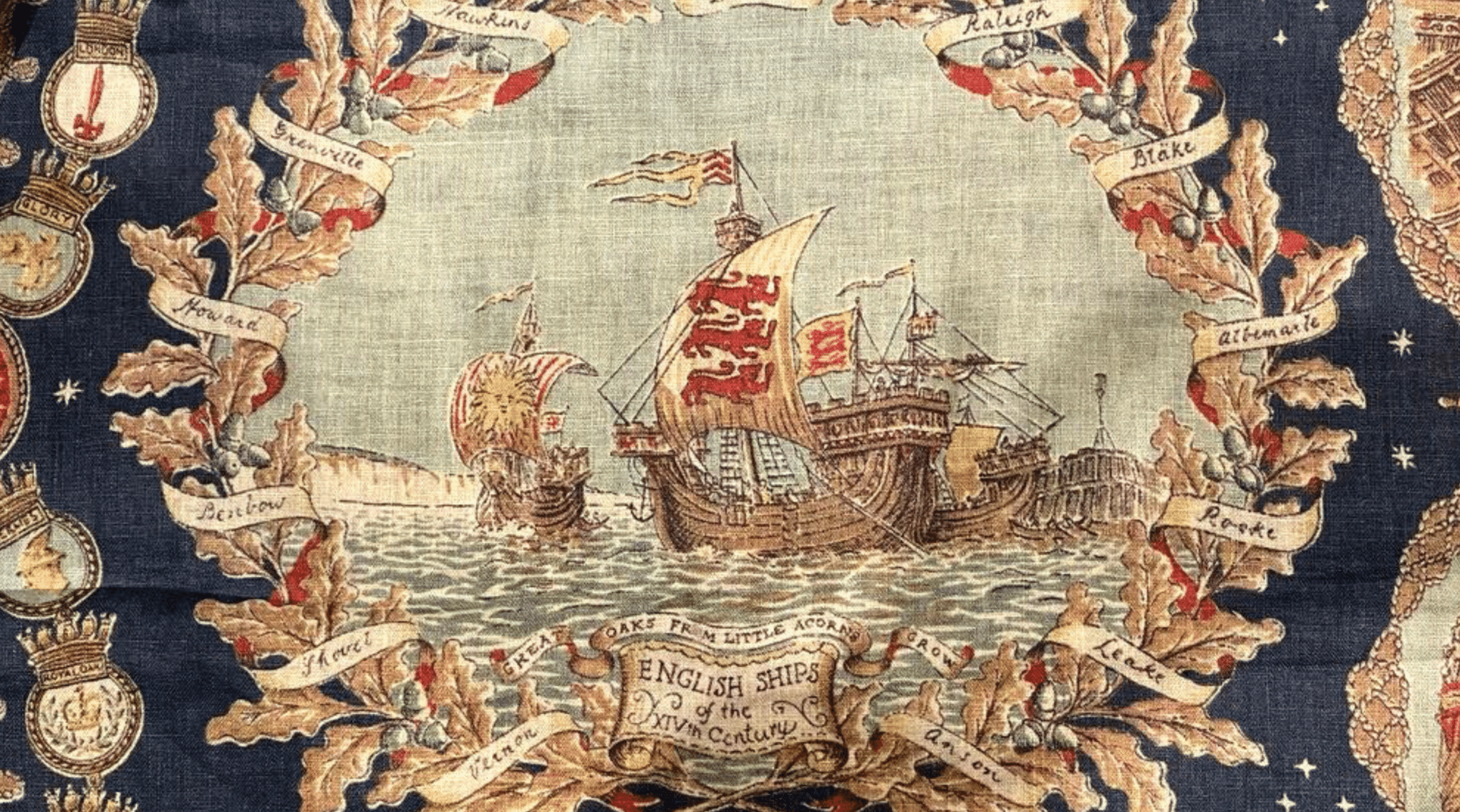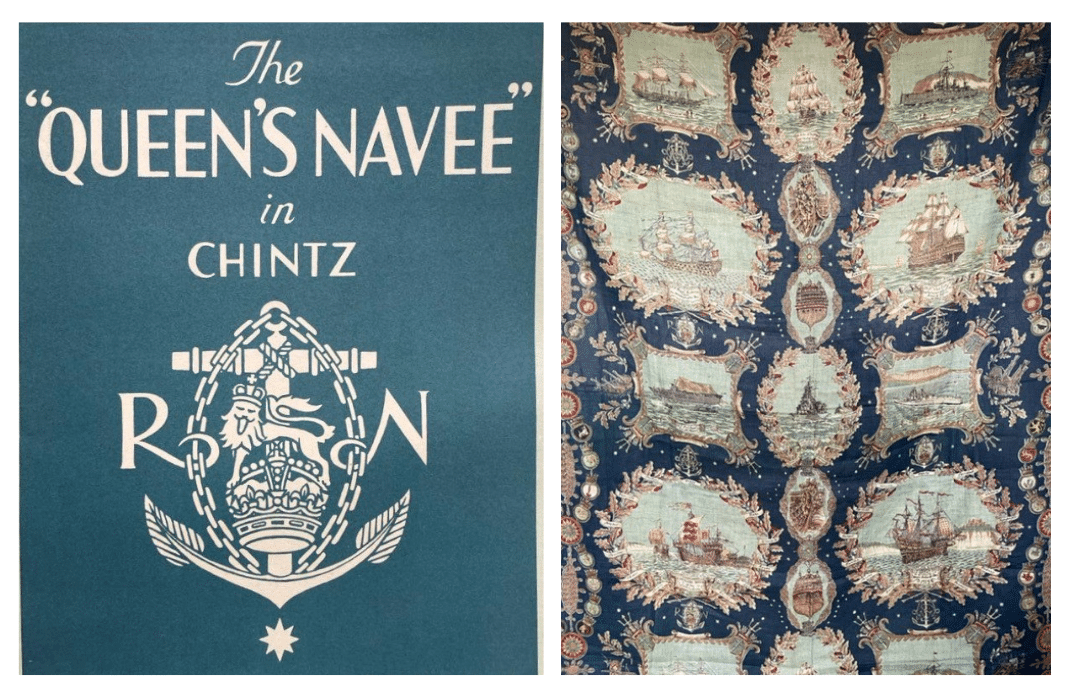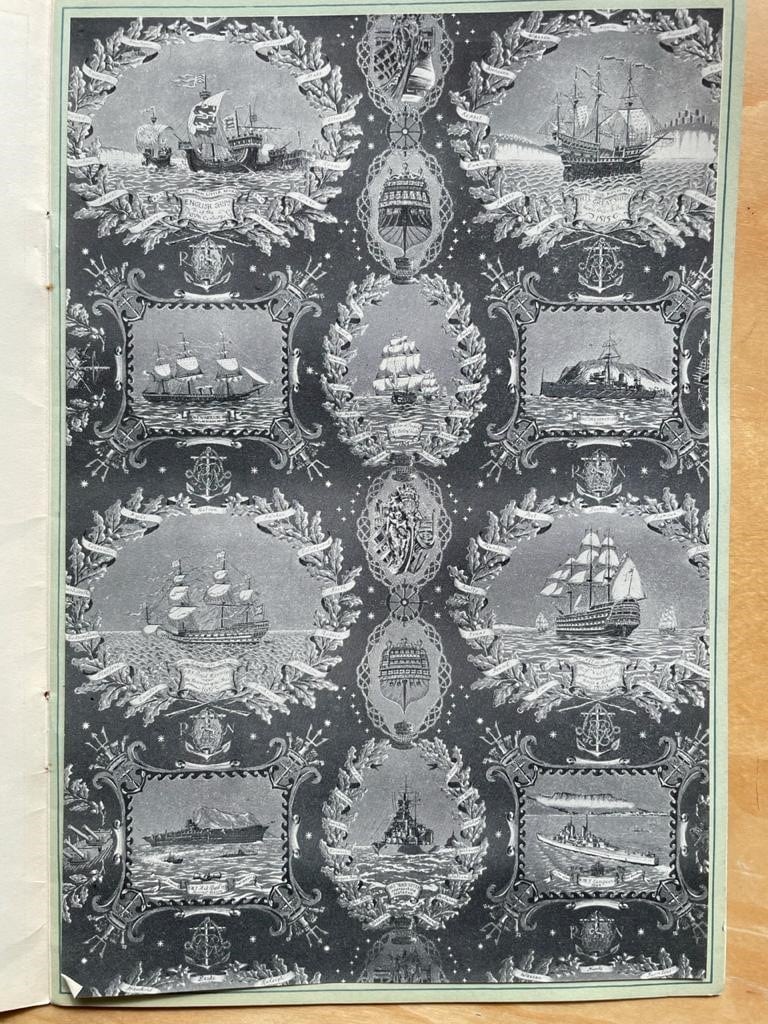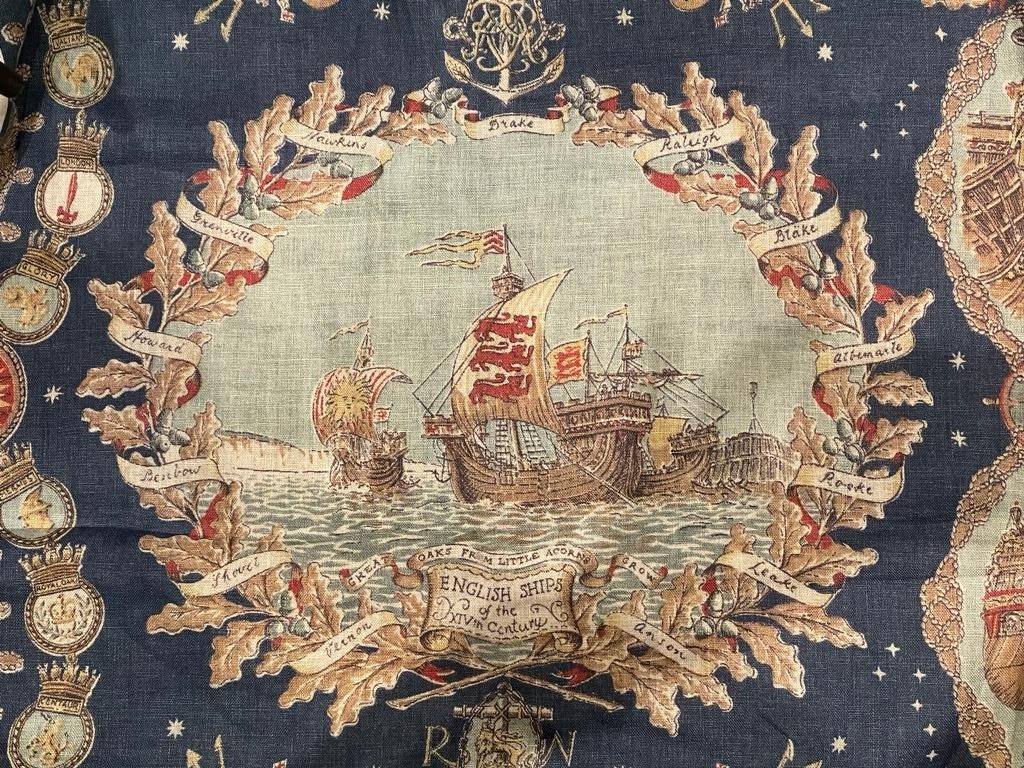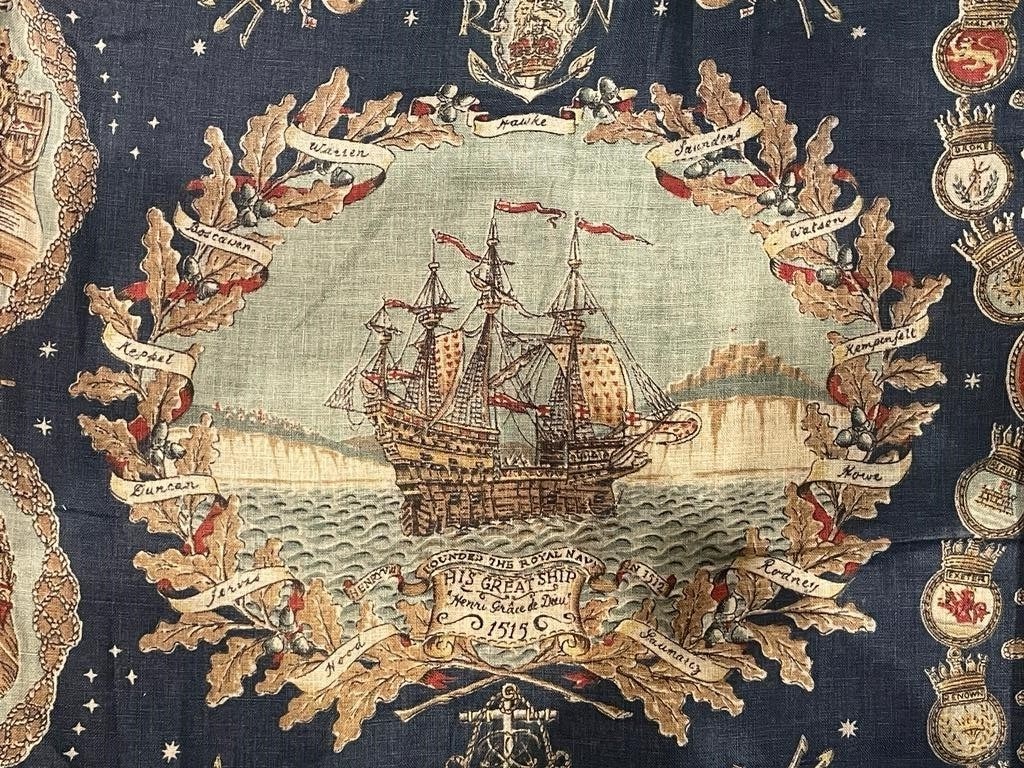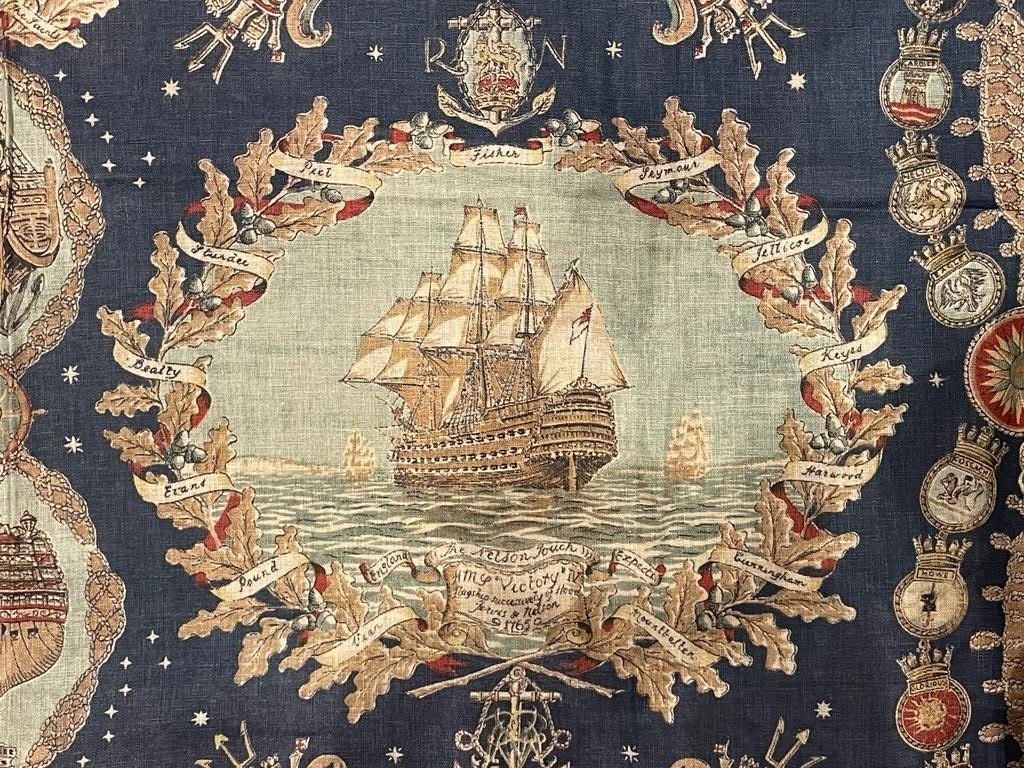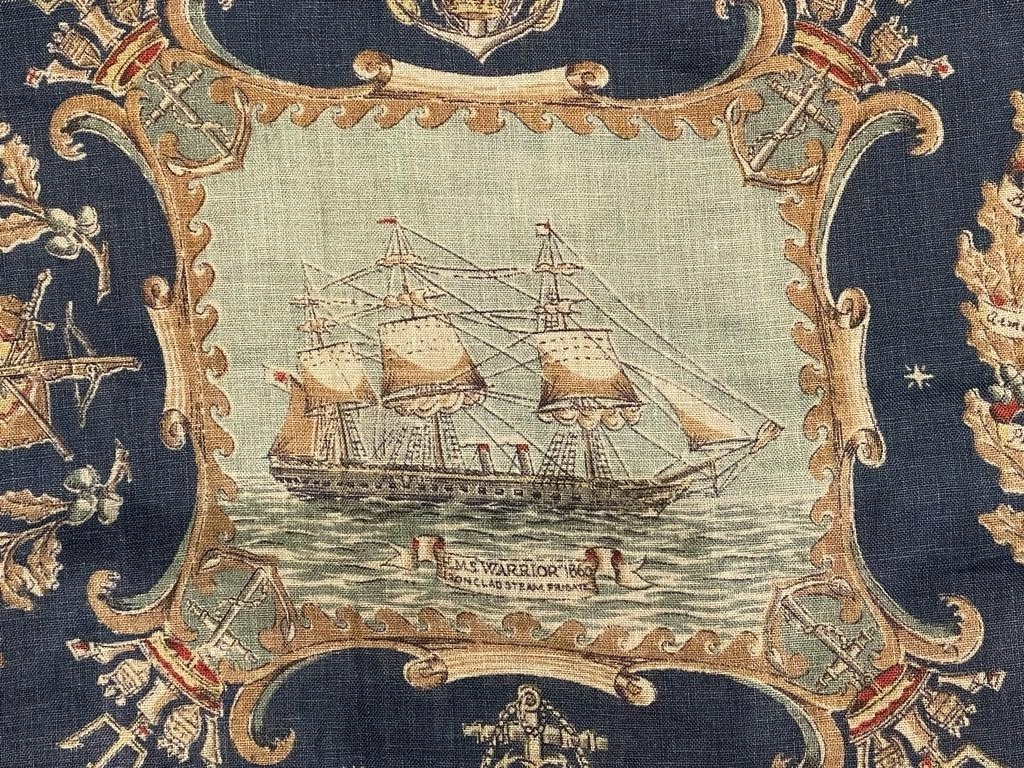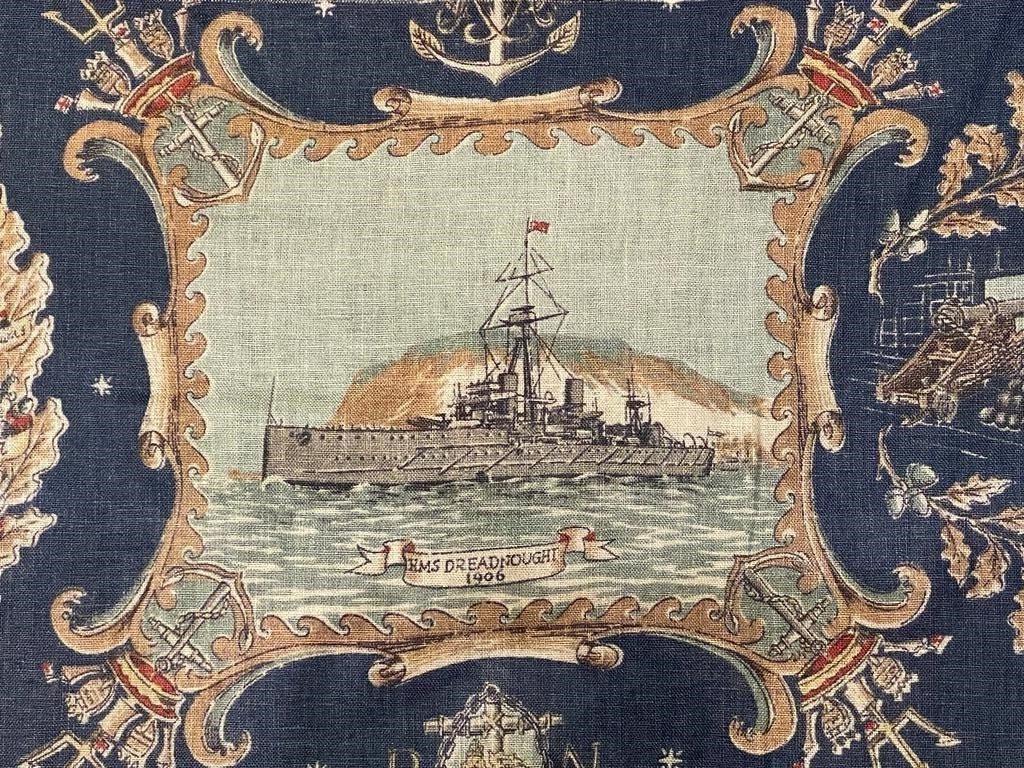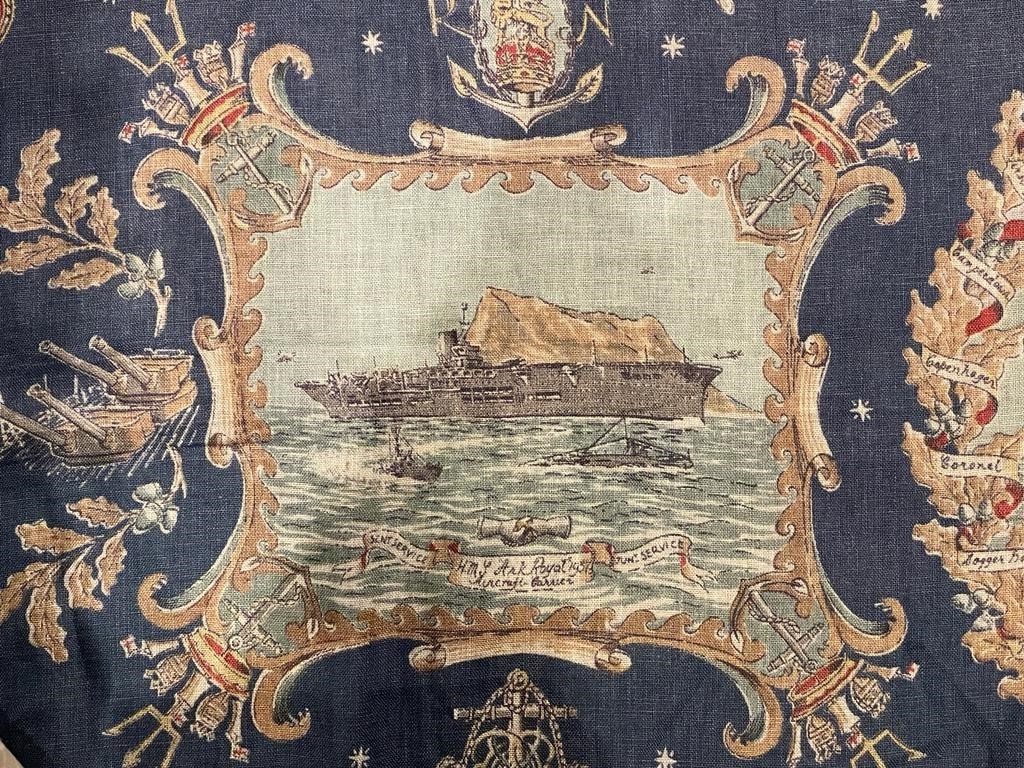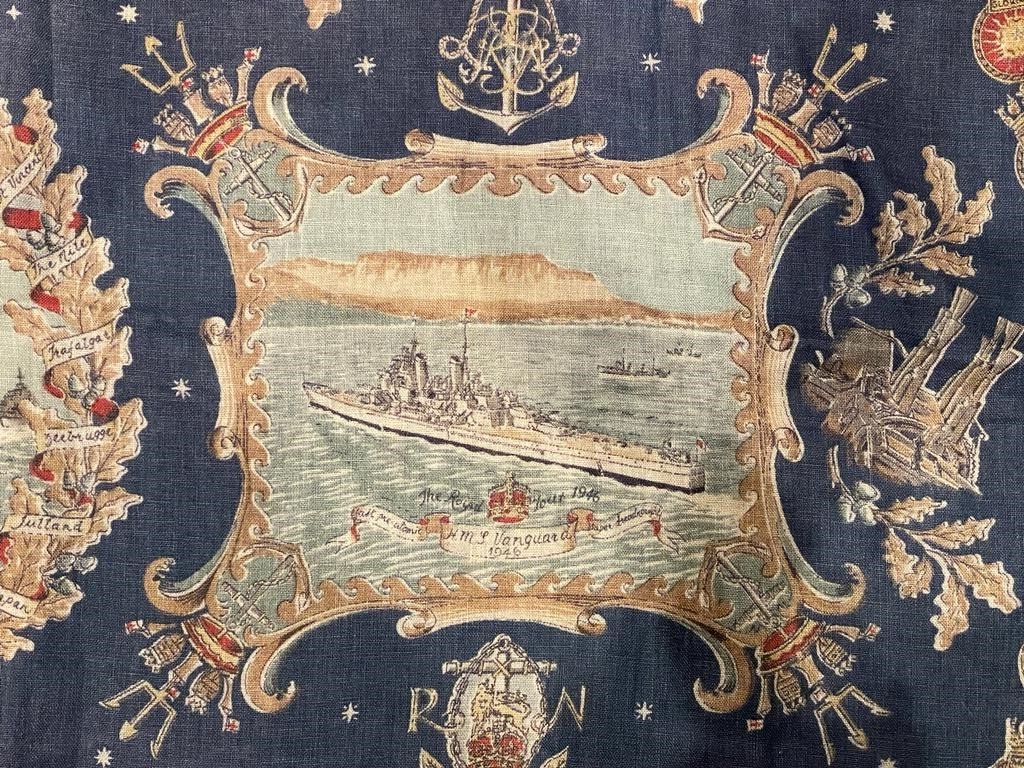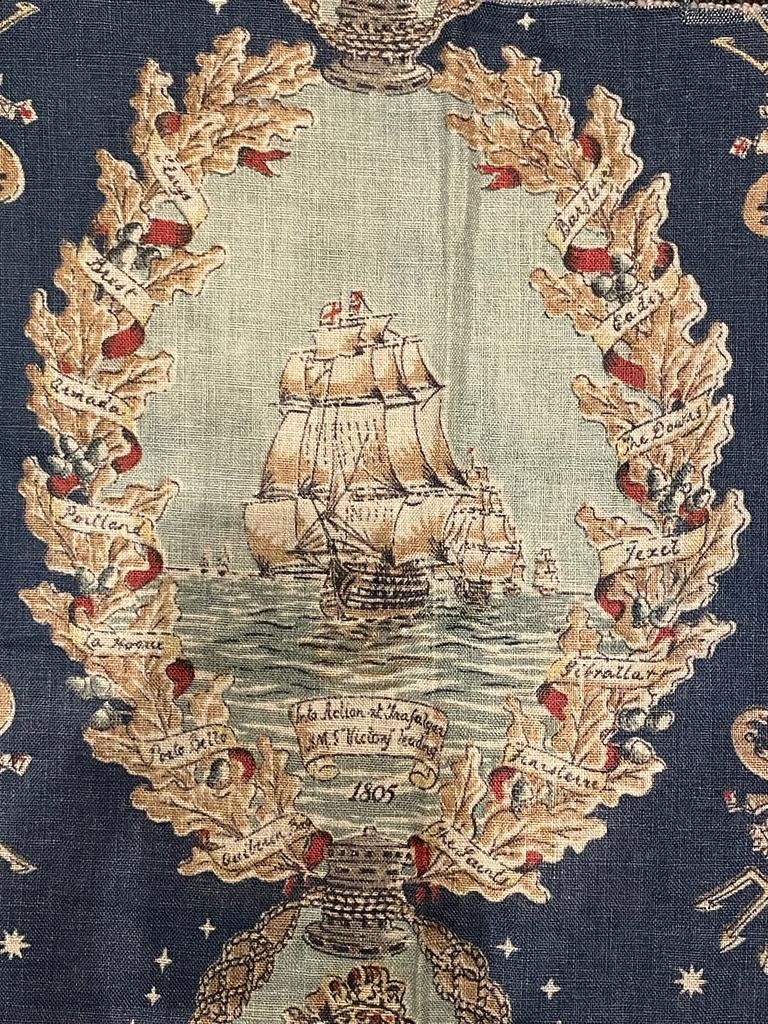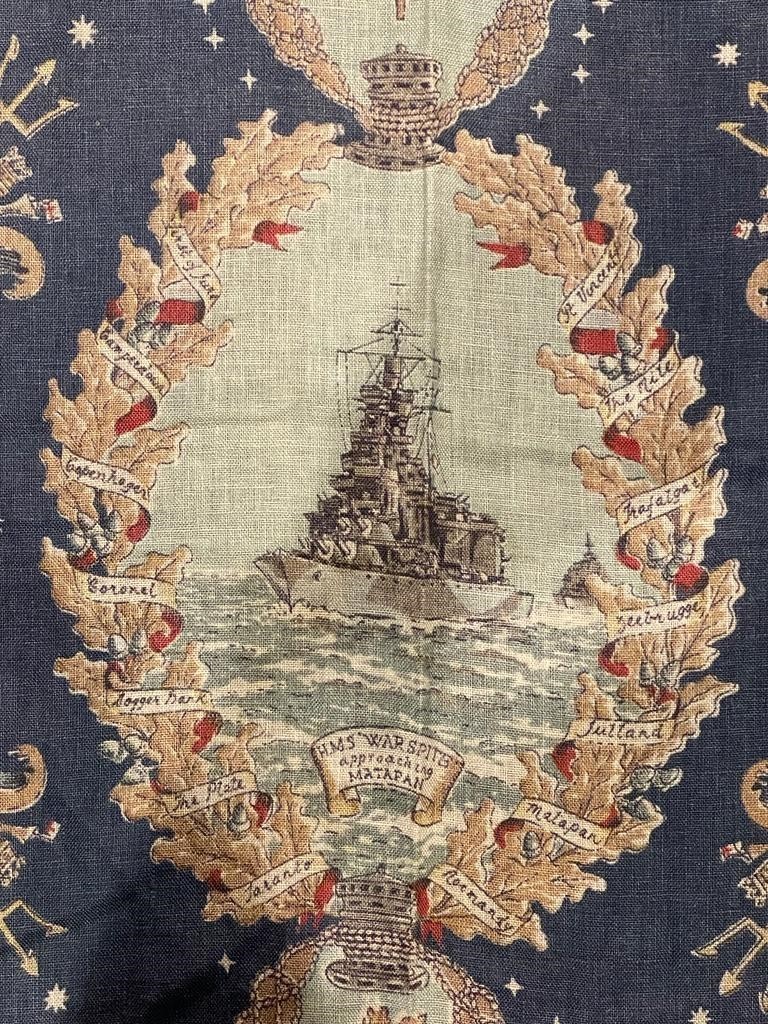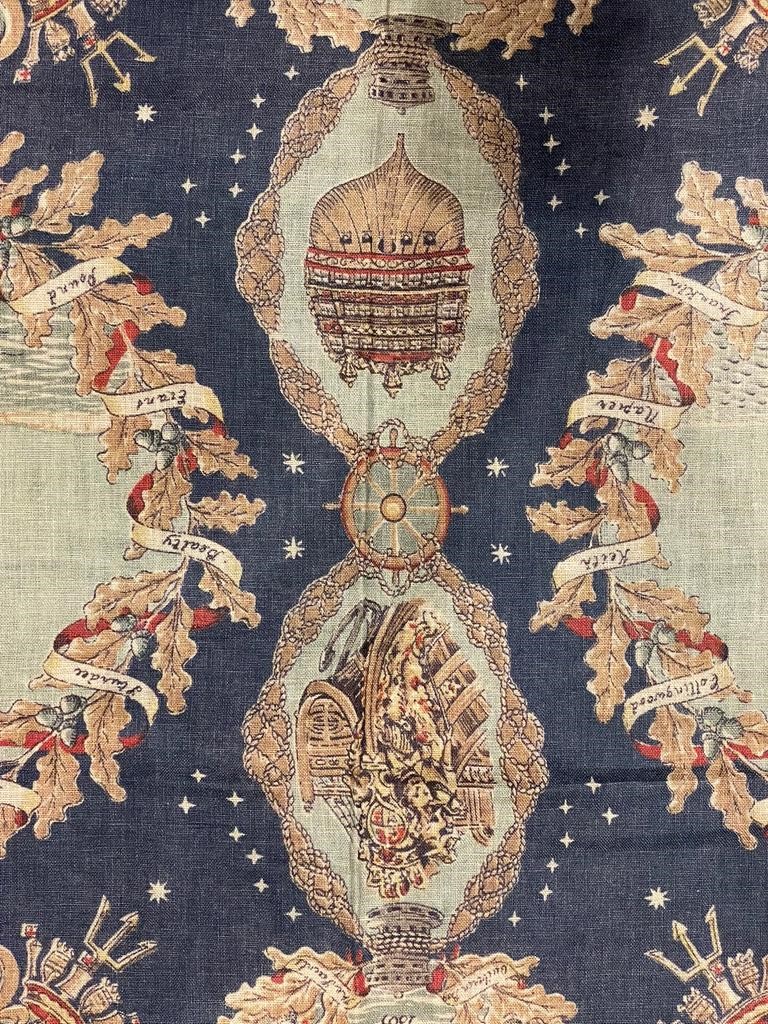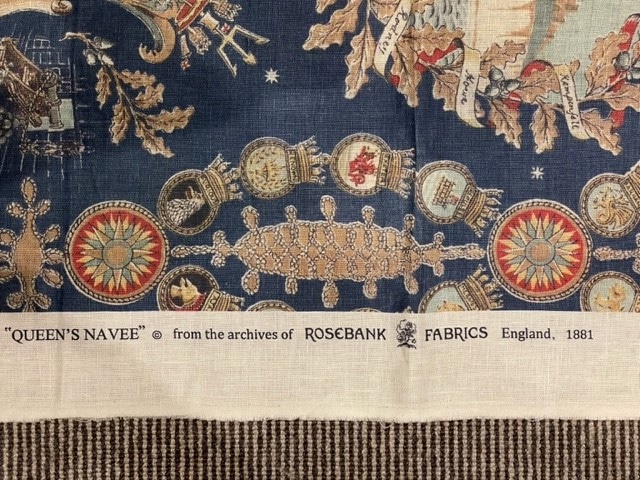I was recently in a design meeting with Simeon Turnbull from Rosebank Fabrics. Simeon is a master at fabric design. His depth of knowledge is incredible and covers the whole process from design to production. We regularly work together, delving into his archives and revamping old designs; recolouring them, altering the scale or putting them on a different base cloth. It gives them a new life and brings them up to the present day.
Recently, this wonderful naval design caught my eye. As with all the best designs, it tells a story that sparks your imagination. It led me to research its history, which is fascinating.
The detail is incredible. Just look at the wonderful ships named, in all their glory. Apparently it took “exactly 900 days from its inception to its production on cloth” and was designed by Philip Stockford for Rosebank Fabrics.
The first panel depicts English ships of the 14th Century (King Edward III’s reign). The banner at the bottom reads “great oaks from little acorns grow”.
Let us take a closer look at the design details:
The background stars symbolise navigation and then there are four large panels depicting great ships of the Wooden Era, each framed with oak leaves which are interlaced with the names of 52 famous Admirals from the period up to World War II.
In the second panel we see “Henri Grace de Dieu”, which was Henry VIII’s flagship and a contemporary of the Mary Rose. Henry VIII founded the royal navy by setting up a board of Admiralty in 1512. Dover castle can be seen in the background.
“The sea as a basis for a fabric design is not new but we were obsessed with the desire to produce a record of the navy which would be worthy of its great traditions…Since the true spirit of the navy is manifested in its sailors, we felt the need to pay tribute to the Admirals.”
In the final panel we see H.M.S. Victory (1765, King George III).
The third panel depicts H.M.S. Royal Sovereign (1637, Charles I) and the banner at the bottom reads “Heart of Oak are our Ships”.
Amongst the larger panels, four smaller panels can be seen, which depict the great ships of the Ironclad era. These are surrounded with a wave motif and feature anchors and the Admiralty crest in each corner.
The first is H.M.S. Warrior (1860, Queen Victoria).
Next up we have H.M.S. Dreadnought (1904, Edward VII) anchored in Portland Harbour
The third ship is H.M.S. Ark Royal (1937, King George VI) with a submarine and Motor Torpedo Boat. You can see the Rock of Gibraltar in the background.
Finally we see H.M.S. Vanguard (1946, King George VI). The inscription and view of Table Mountain in the background commemorates the Royal Tour to South Africa in 1946.
In the centre of the design are two of the “greatest ships of all time”: H.M.S. Victory, flagship of Lord Nelson, in full sail for Trafalgar 180 (left) and H.M.S. Warspite, flagship of Admiral Cunningham, approaching Matapan (1941) shortly before nightfall (right).
In between the two famous ships are ribbons inscribed with the names of twenty-eight famous Naval battles, all significant milestones in British history.
To pay tribute to the marine architects and craftsmen, Bow and Stern illustrations are set within rope panels.
Along the edge are thirty-two renowned ship badges. A mariner’s compass links each group and there is a design based on the ‘double chain’ knot in the centre.
This rare and beautiful design documents British naval history and celebrates the many precious lives involved. I can’t wait to use the fabric as a tribute to Rosebank Fabrics, to the designer Philip Stockford and to the story behind the design.

